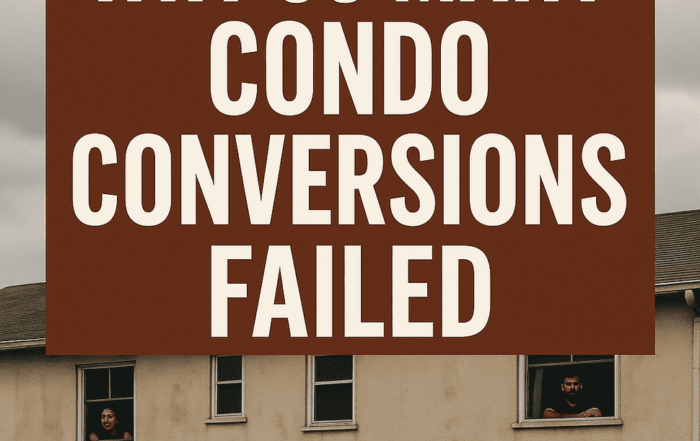
Leverage in Real Estate Investing: How to Build Wealth Without Millions in the Bank
Introduction: Why Every Smart Investor Uses Leverage
If you’ve ever wondered how some investors build massive real estate portfolios while others struggle to buy even one rental, the answer is leverage.
Leverage is the ultimate wealth-building hack in real estate. It’s the art of using other people’s money (OPM)—usually banks, private lenders, or even seller financing—to buy properties. Instead of paying all cash for one house, you spread your money across multiple properties and let your tenants pay off your loans.
This strategy allows you to maximize returns, scale faster, and build generational wealth without waiting decades to save up enough money to buy properties outright.
But like any powerful tool, leverage can either work for you or against you. Use it wisely, and it accelerates your path to financial freedom. Use it recklessly, and you could be staring down a foreclosure.
In this guide, we’ll break down how to use leverage the right way, which loans are best for investors, and how to avoid common mistakes.
What is Leverage in Real Estate Investing?
Leverage is simple: it’s using borrowed money to buy property while keeping most of the profits.
Think of it this way:
- If you had $200,000 in cash, you could buy one house outright.
- Or you could put $50,000 down on four houses and finance the rest.
With leverage, you now own four income-generating properties instead of just one. If each house appreciates, your wealth grows four times faster than it would with just one fully paid-off property.
Leverage in Action: A Simple Example
Let’s say you buy a rental property for $200,000.
- You put 20% down ($40,000) and borrow the remaining $160,000 from a bank.
- The home appreciates 5% per year, meaning after one year, it’s worth $210,000.
- Your equity increased by $10,000, even though you only invested $40,000.
Your return on investment (ROI) isn’t just 5% (the appreciation rate)—it’s 25% ($10,000/$40,000)!
Now imagine you do this with multiple properties. This is why smart investors scale using leverage instead of paying cash.
The Benefits of Using Leverage in Real Estate
Why is leverage so powerful? Because it lets you:
1. Control More Assets with Less Money
Instead of waiting years to save up enough for one property, you can buy multiple properties sooner. This speeds up your wealth-building process and increases cash flow.
2. Multiply Your Returns
Leverage lets you boost your ROI. If you pay cash, your returns are tied only to appreciation. But with leverage, your returns grow exponentially because you’re controlling more assets with less money.
3. Inflation Works in Your Favor
As inflation rises, so do rents and property values. But your mortgage payments stay fixed, meaning your loan becomes cheaper over time. Your tenant’s rent pays off your loan, while your property value appreciates. Win-win!
4. Tax Advantages
Mortgage interest is tax-deductible, and you can also benefit from depreciation, reducing your taxable income. Leverage not only helps you scale but also lowers your tax bill.
5. Build Wealth While Keeping Liquidity
Using leverage means you don’t tie up all your cash in one property. You keep liquidity (cash reserves) for repairs, new deals, or other investments.
The Right and Wrong Way to Use Leverage
Leverage can be a double-edged sword. If used correctly, it can build wealth quickly. But if mismanaged, it can lead to financial disaster.
✅ The Right Way to Use Leverage:
✔ Buy Cash-Flowing Properties – Your rental income should cover mortgage payments, expenses, and leave profit.
✔ Secure Good Loan Terms – Go for fixed-rate mortgages or low-interest DSCR loans that allow long-term stability.
✔ Keep Cash Reserves – Always have 3-6 months of expenses saved in case of vacancies or unexpected repairs.
✔ Lock in Long-Term Debt – Avoid short-term or high-interest loans that could leave you exposed.
✔ Plan for Market Fluctuations – Property values go up and down. Make sure you can hold onto properties during downturns.
❌ The Wrong Way to Use Leverage:
🚨 Overleveraging – Taking on too much debt with no cash reserves can lead to foreclosure.
🚨 Negative Cash Flow – Buying a property where expenses exceed rent is a fast track to losing money.
🚨 Betting on Appreciation – Buying in hopes that values will rise without strong cash flow is risky speculation.
🚨 Taking High-Interest Loans – Hard money loans and adjustable-rate mortgages can drain your profits if rates go up.
Best Loan Options for Leveraging Real Estate
Not all loans are created equal. Here are the best leverage options for investors:
1. Conventional Loans
🏡 Best for: Long-term rental investors with good credit
🔹 Low interest rates
🔹 Requires 20-25% down
🔹 Strict income & debt requirements
2. DSCR (Debt-Service Coverage Ratio) Loans
🏠 Best for: Investors who want to qualify based on rental income instead of personal income
🔹 No personal income verification
🔹 Loan approval is based on property’s rental income
🔹 Higher interest than conventional loans but flexible
3. HELOC (Home Equity Line of Credit)
💰 Best for: Investors who already own property and want to buy more
🔹 Borrow against existing home equity
🔹 Interest rates fluctuate but lower than hard money
4. Private Money & Hard Money Loans
💵 Best for: Flippers or short-term investors
🔹 Quick approvals
🔹 High interest rates (8-15%)
🔹 Best for deals where you flip fast
Final Thoughts: Use Leverage to Build Wealth the Smart Way
Leverage is the secret sauce behind successful real estate investing. It’s how investors scale from one rental to an entire portfolio, building wealth while keeping their cash liquid.
But remember—leverage is a tool, not a shortcut. Use it wisely, focus on cash flow, and avoid overleveraging. The goal isn’t just to own a lot of properties, but to own profitable ones.
So, what’s the next step? Start small, understand your financing options, and leverage your way to financial freedom! 🚀
Pick your expert. Book your free 15-minute consult now. We are here to help!
Our Top Articles
Tampa Bay Times Featured: Jorge Vazquez on Turning Storm Damage into Investment Gold
Jorge Vazquez2025-07-22T01:15:43+00:00July 21st, 2025|Comments Off on Tampa Bay Times Featured: Jorge Vazquez on Turning Storm Damage into Investment Gold
After the Storm: Why Investors Are the Real Heroes in Florida’s Housing Comeback By Jorge [...]
How to Create an HOA in Florida (And Why You Might Need One If You’re Buying Into a Condo Mess)
Jorge Vazquez2025-07-21T02:58:28+00:00July 21st, 2025|Comments Off on How to Create an HOA in Florida (And Why You Might Need One If You’re Buying Into a Condo Mess)
How to Create an HOA in Florida (And Why You Might Need One If You’re Buying Into a Condo [...]
Why So Many Condo Conversions Failed?
Jorge Vazquez2025-07-21T03:01:02+00:00July 21st, 2025|Comments Off on Why So Many Condo Conversions Failed?
Creating an HOA When You Own the Whole Building (And Why So Many Condo Conversions Fail Without One) Let’s [...]
Property Profit Academy:
✔ Learn to buy properties with little to no money down.
✔ Build a $10M portfolio step by step.
✔ Master strategies like BRRRR and house hacking.









